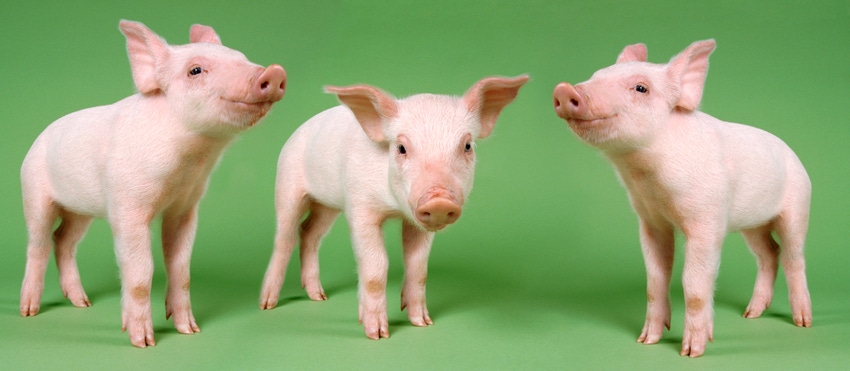May 29, 2019

Agricultural Research Service scientists are investigating using the naturally occurring amino acid known as L-glutamine to help piglets cope with the stress of travel.
Initial laboratory studies in 2017 showed glutamine-fed piglets gained as much weight as antibiotic-treated ones. But the researchers, led by ARS animal scientist Jay Johnson, wanted to try and replicate those results on a larger scale that more closely mimicked commercial production scenarios.
The effort, which was supported by the National Pork Board, arose from a need to provide livestock producers with alternatives to using dietary antibiotics as a growth-promoting agent in swine. A federal rule in 2017 restricted the practice amid concerns that microbial resistance to medically important antibiotics could jeopardize their effectiveness in fighting human infection, notes Johnson, with the ARS Livestock Behavior Research Unit in West Lafayette, Ind.
In the larger-scale trials, groups of piglets were transported to a nursery barn located 12 hours from where they were weaned to simulate the kinds of stress they’d experience commercially, which can diminish the young animals’ immune system function, appetite and weight gain — something antibiotics helped them recover from.
For the nursery phase of the study, one group of piglets was fed a diet containing the antibiotic chlortetracycline, another glutamine and a third group — used as experimental controls — nothing but feed ingredients.
Among the findings, published in the May 29 issue of the Journal of Animal Science:
Glutamine-fed piglets gained weight as well as the antibiotic group but showed fewer signs of intestinal damage from pathogens.
Glutamine group members were also somewhat less aggressive in pens with mixed litters than those given the antibiotic.
Compared to the control group, glutamine- and antibiotic-treated piglets showed lower blood plasma levels of tumornecrosisfactoralpha, a biochemical marker of inflammation and immune system activity that can use energy and divert it from the animals’ growth needs.
The meat quality of market-ready pigs from the glutamine group was no different than that of the antibiotic or control group.
Johnson says further research will focus on learning how glutamine works to promote growth and wellbeing in piglets after weaning and transport.
Source: USDA Agricultural Research Service, which is solely responsible for the information provided and is wholly owned by the source. Informa Business Media and all its subsidiaries are not responsible for any of the content contained in this information asset.
You May Also Like




